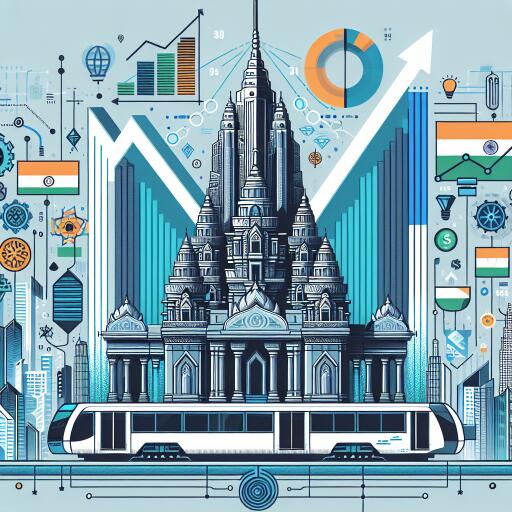Asian Development Bank Raises Indian Growth Projection
The Asian Development Bank (ADB) has recently updated its economic outlook for India, increasing the country’s Gross Domestic Product (GDP) forecast for the current fiscal year from 6.7% to 7%. This adjustment places India as a pivotal growth dynamo within the Asia-Pacific area, demonstrating its critical role in the region’s economic progress.
In a subsequent fiscal year analysis, the ADB projects India’s GDP to escalate further to 7.2%. This optimistic forecast is attributed to a combination of factors including robust investment, a rebound in consumption, and an upward trend in exports. These observations were detailed in the ADB’s publication titled ‘Asia’s Economic Development’, shedding light on the economic movements within the region.
The bank’s updated forecasts were published following a Bloomberg Economics report, which posited that India is on track to becoming the leading contributor to global growth in terms of purchasing power parity (PPP) by 2028. Bloomberg’s analysis suggests a potential acceleration in India’s economic growth, reaching up to 9% by the decade’s end, a significant rise from the 7.6% growth marked in the fiscal year concluding on March 31. Key sectors driving this growth include electronics manufacturing and aviation, buoyed by India’s substantial and youthful population.
Recent data revealed India achieving an 8.4% GDP growth in the third quarter of the fiscal year 2023-24, marking a progression from the 7.6% growth recorded in the earlier June to September period. The Indian government, in response to these positive trends, has adjusted its GDP growth forecast for the fiscal year 2023-24 upwards from 7.3% to 7.6%.
India’s economic ascent saw it surpass the United Kingdom, becoming the world’s fifth-largest economy in 2022. The Indian Government, led by Prime Minister Narendra Modi, has set ambitious economic targets aiming to reach a $5 trillion economy by 2027 and projecting a further growth milestone of $7 trillion by 2030, driven by continuous reforms.
Despite the optimism surrounding India’s economic prospects, some voices of caution have emerged. Raghuram Rajan, a distinguished economist and former governor of the Reserve Bank of India, has expressed concerns over what he views as “the hype” around India’s growth rates. In a Bloomberg interview, Rajan highlighted the need for India to address structural issues such as education and workforce skills to unlock its full economic potential.
His comments sparked debate among Indian economists and officials. One notable response came from Arvind Virmani, a member of the government policy think tank NITI Aayog, who criticized Rajan’s perspective as that of a “parachute economist,” suggesting a disconnection from the on-the-ground realities of India’s growth trajectory.
As India navigates its path towards becoming a major economic force, the divergent views on its growth dynamics highlight the complexities of achieving sustainable development. With its considerable population and strategic initiatives, India remains a key player on the global economic stage, signaling a future full of potential and challenges alike.
